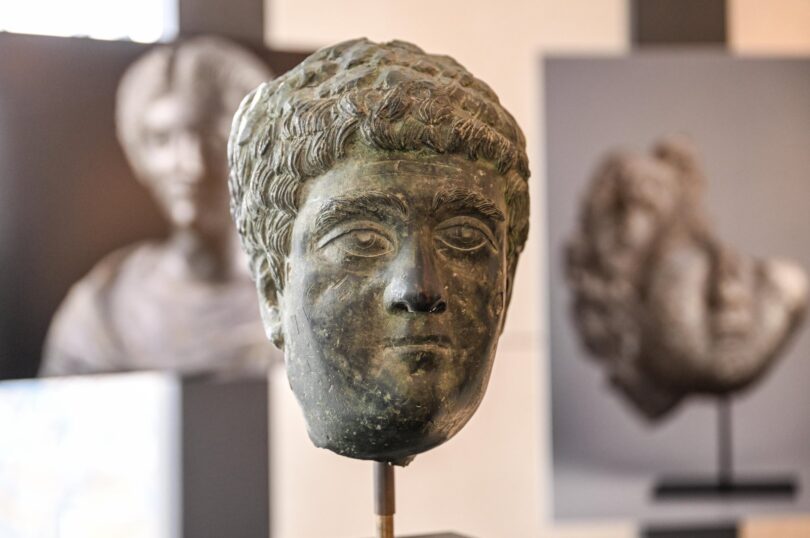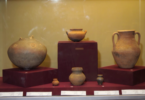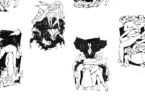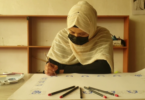Buse Keskin
The year 2023 could be considered highly significant for Türkiye in reclaiming numerous cultural assets illegally taken out of the country. According to the Ministry of Culture and Tourism’s records of repatriated artifacts from abroad, a total of 3,018 historical artifacts were returned to Turkish soil in 2023, including voluntarily returned pieces.
Here is a quick look at the most notable artifacts entering archaeological museums’ inventories and the countries from which items were retrieved.
The U.S.
Twelve historical artifacts of Anatolia seized in the U.S. were handed over to the officials of Türkiye’s New York Consulate General by court order due to the efforts of the Ministry of Culture and Tourism in March.
The list of historical artifacts seized in the U.S. and returned to Türkiye includes two bronze bull carts, a Roman military diploma, a Neolithic mother goddess figurine, an Urartian terracotta vase and a Roman bust. The officials also noted that the bronze statue of Septimus Severus – without its head – from Burdur’s ancient city of Boubon, among the returned artifacts has particular importance.
This month, an additional 41 artifacts of Anatolian origin were returned from the U.S.
Among the significant groups of returned artifacts are 22 Kilia-type idol heads. These idols, known as the Kilia (Gelibolu) type, are recognized to have been produced solely in the village of Kulaksızlar in the Manisa-Akhisar district. Kilia idols, typically found from Çanakkale to the southwestern corner of Western Anatolia down to Antalya, represent a distinctive idol type specific to Anatolia, dating back to the Late Chalcolithic period (fifth millennium B.C.) to the Early Bronze Age (third millennium B.C.) settlements.
Furthermore, a terracotta vase made in the style of a wild goat, reflecting the ceramic production style dominant in Western Anatolia during the seventh and sixth centuries B.C., and one Olpe made using the black-figure technique stand out among the returned artifacts. The Olpe, used for serving drinks in ancient times, is one of the earliest examples of its form, featuring dancing satyrs on its surface.
Italy
A stele originating from Zeugma and illegally smuggled out of Türkiye years ago was successfully recovered and returned to Türkiye in April.
Elaborating on the history of the tombstone, Ersoy stated: “Zeugma, meaning ‘bridge’ in ancient Greek, witnessed the creation of remarkable works of art throughout its ancient history, particularly during its golden age in the Roman era. It is apparent that this tombstone, which has brought us together today, was erected in this city during the A.D. second century by a devoted Zeugma resident, inscribing words of love and farewell to her husband. The tombstone bears the expressions of a spouse’s love and farewell.”
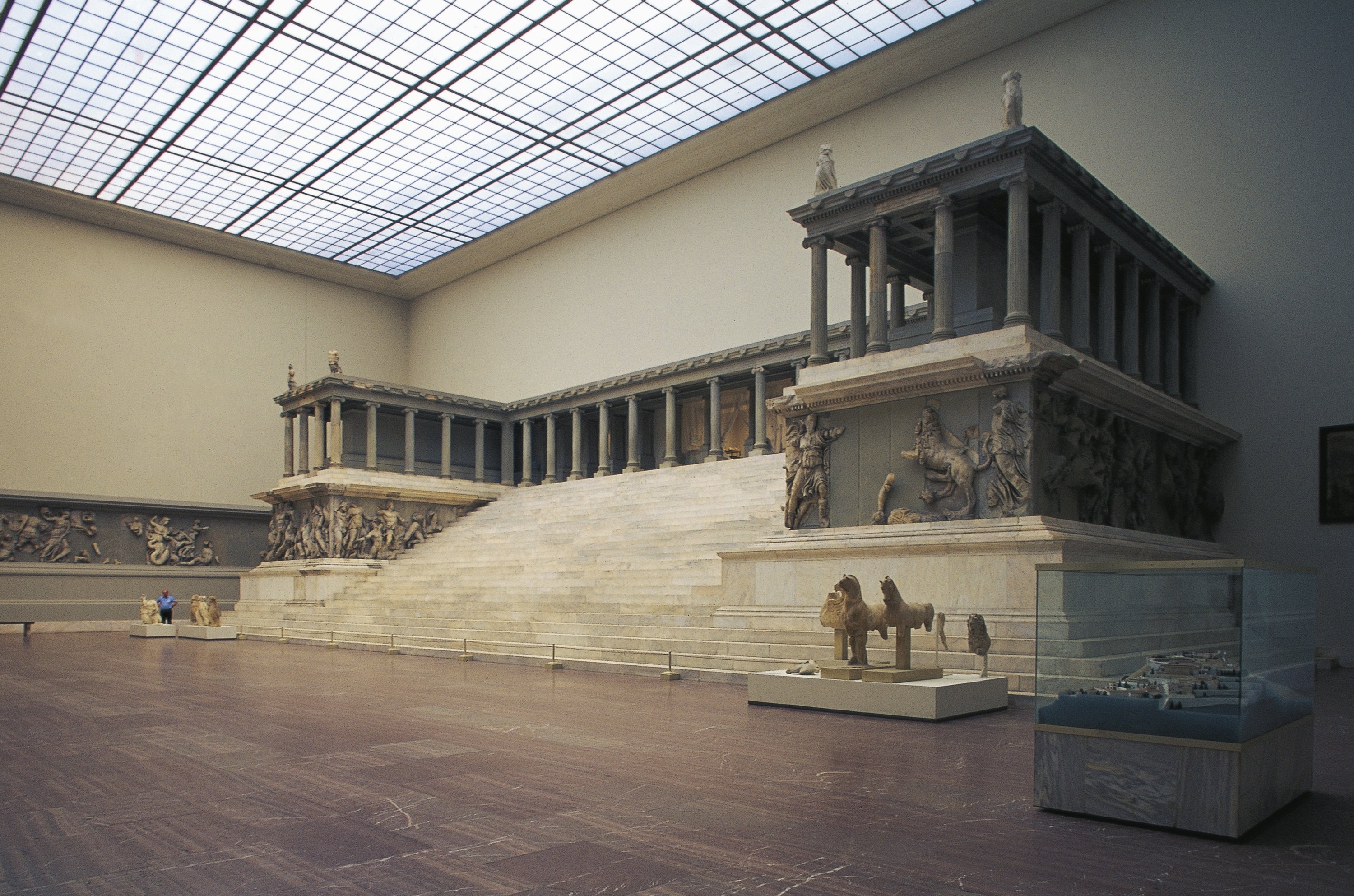
Switzerland
The 37 artifacts, including items from the Urartu period, such as pottery and harness parts, as well as a Roman-era deer statue, were handed to Türkiye under a bilateral agreement with Switzerland.
The repatriation became possible due to an agreement signed on Nov. 15, 2022, between Ankara and the Swiss Federal Council. The agreement aims to prevent the illegal import, transit and return of archaeological cultural assets. With the accord in place, Switzerland ceased to be a destination for archaeological pieces unlawfully taken from Türkiye. Swiss authorities gained the power to seize these artifacts, and Türkiye was granted the right to inspect items suspected to originate from Anatolia, facilitating their return.
Among the notable artifacts are three “bull-head-handled cauldrons,” considered prestigious items for the aristocracy during the Urartian rule between the ninth and seventh centuries B.C. Additionally, three furniture pieces shaped like horse legs, intricately crafted by the Urartians, reflect their belief in an afterlife. These bronze furniture components, shaped like lion claws and bull and horse hooves, were used to decorate tombs and were discovered during archaeological excavations.
The items to be returned also include three furniture parts shaped like horse legs, metal, ivory or leather pieces connected to headstalls, five eye shields and 22 horse harness pieces. Moreover, there are four crescent-shaped chest plates, six bib-type chest plates, two shoulder ornaments, four discs used in harnesses, an essential Urartian bronze helmet, a five-bodied vessel from the Urartu era, a Kusura-type idol, a deer figurine commonly found in Roman-era excavations in Anatolia and a silver vase adorned with animal reliefs, dating back to the A.D. second and third centuries.
Pending requests
Currently, the Antalya Promotion Foundation (ATAV) highlights the campaign “Natural Heritage is Beautiful in Native Lands” to support the return of eight historical artifacts that were smuggled to other countries.
The campaign includes the Nereid Monument, Harpy tomb and the tomb of Payava, a monument recovered in the ancient city of Xanthos from the British Museum; Heroon of Trysa from Kunsthistorisches Museum in Vienna; a child gadroon from Myra sepulcher in Athens Museum; the Thyke Sculpture from Belgium and finally the Sion Treasure from Dumbarton Oaks Museum Collection in the U.S.
Missing head issue
The bronze head of Emperor Septimius Severus exhibited at a museum in Copenhagen is the reason for a dispute between the Danish museum and Türkiye as authorities claim that the artifact was looted during an archaeological excavation in the 1960s and is requesting its return.
A statue of the Roman emperor, believed to have been taken from Türkiye and housed in a private collection in the U.S., was returned to Türkiye, missing its head. Turkish authorities claim the head is in Copenhagen’s Ny Carlsberg Glyptotek, which has been displayed there for over 50 years. However, Danish experts express skepticism, citing the weak documentation and the need to compare the breaks between the torso and the head.
Pergamon Altar
The return of the Pergamon Altar, which gave its name to Germany’s famous Pergamon Museum, to Türkiye is also another subject of debate.
Constructed during the reign of ancient Greek King Eumenes II, the Pergamon Altar, which was brought to Prussia from the Ottoman lands by the German engineer Carl Humann in the 1870s, is on display at the Pergamon Museum in Berlin.
In June, Saraya Gomis, the undersecretary of the Berlin State Office for Equal Treatment and Against Discrimination, called for the Pergamon Altar and the bust of Nefertiti to be returned to their countries of origin.
She also stated that the approach to repatriating cultural assets should change.
“With an anti-discrimination embrace, we should say that all of these are brought from other parts of the world and do not belong to us, brought illegally,” she said.
Courtesy: Dailysabah

